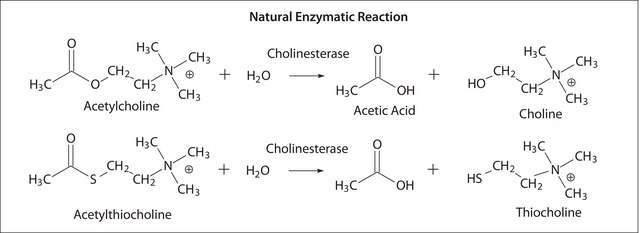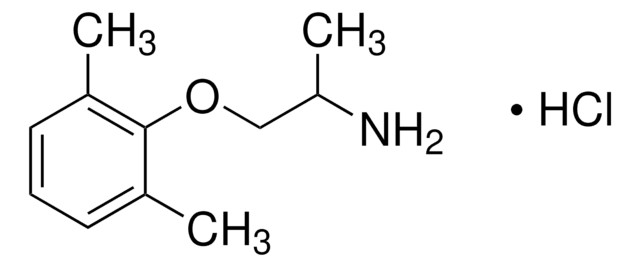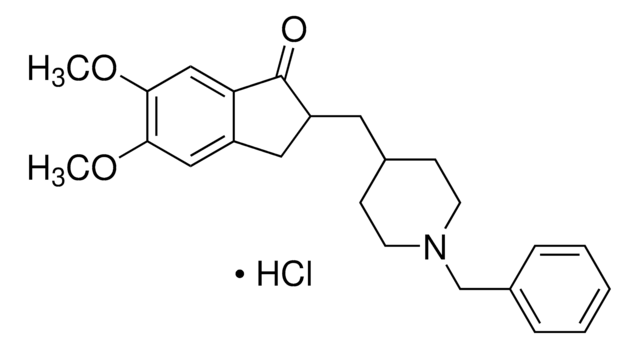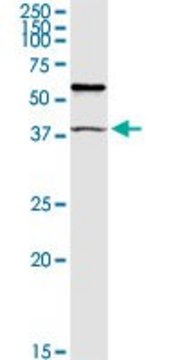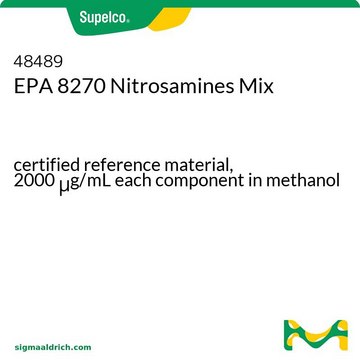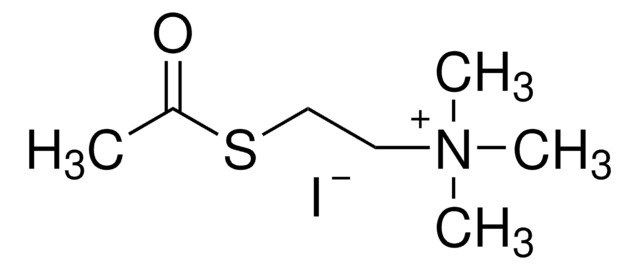所有图片(1)
About This Item
经验公式(希尔记法):
C10H17NOS · xHCl · yH2O
CAS号:
分子量:
199.31 (anhydrous free base basis)
UNSPSC代码:
12352200
PubChem化学物质编号:
NACRES:
NA.77
推荐产品
质量水平
方案
≥95% (HPLC, NMR)
表单
powder
储存条件
desiccated
颜色
white to tan
溶解性
H2O: ≥25 mg/mL
创始人
Daiichi-Sankyo
运输
wet ice
储存温度
−20°C
SMILES字符串
O.Cl.Cl.C[C@@H]1O[C@@]2(CS1)CN3CC[C@H]2CC3.C[C@@H]4O[C@@]5(CS4)CN6CC[C@H]5CC6
InChI
1S/2C10H17NOS.2ClH.H2O/c2*1-8-12-10(7-13-8)6-11-4-2-9(10)3-5-11;;;/h2*8-9H,2-7H2,1H3;2*1H;1H2/t2*8-,10-;;;/m11.../s1
InChI key
ZSTLCHCDLIUXJE-GMLJRNIPSA-N
应用
Cevimeline hydrochloride hemihydrate may be used in cell signaling studies.
生化/生理作用
Cevimeline is a muscarinic M1 and M3 receptor agonist.
Cevimeline is a muscarinic M1 and M3 receptor agonist. Cevimeline stimulates secretion by the salivary glands and is used to treat the symptoms of dry mouth.
Cevimeline stimulates the peripheral muscarinic acetylcholine receptors of salivary glands and increases the concentration of Ca+2 in parotic acini and duct cells of rats. It thus acts as therapeutic agent for xerostomia.
特点和优势
This compound is a featured product for Neuroscience research. Click here to discover more featured Neuroscience products. Learn more about bioactive small molecules for other areas of research at sigma.com/discover-bsm.
This compound is featured on the Acetylcholine Receptors (Muscarinic) page of the Handbook of Receptor Classification and Signal Transduction. To browse other handbook pages, click here.
This compound was developed by Daiichi-Sankyo. To browse the list of other pharma-developed compounds and Approved Drugs/Drug Candidates, click here.
警示用语:
Danger
危险声明
危险分类
Acute Tox. 3 Oral
储存分类代码
6.1C - Combustible acute toxic Cat.3 / toxic compounds or compounds which causing chronic effects
WGK
WGK 3
闪点(°F)
Not applicable
闪点(°C)
Not applicable
法规信息
新产品
历史批次信息供参考:
分析证书(COA)
Lot/Batch Number
Hirotaka Ueda et al.
The journal of medical investigation : JMI, 56 Suppl, 267-269 (2009-01-01)
Cevimeline, a therapeutic drug for xerostomia, is an agonist of muscarinic acetylcholine receptors (mAChRs), and directly stimulates the peripheral mAChRs of the salivary glands. Since cevimeline is distributed in the brain after its oral administration, it is possible that it
Kentaro Ono et al.
The journal of medical investigation : JMI, 56 Suppl, 375-375 (2009-01-01)
Previous reports suggested that there is no significant difference in the binding affinity of pilocarpine and cevimeline on muscarinic receptors (1). However, in vivo studies from our laboratory suggested that pilocarpine-induced salivation from the parotid gland is greater than that
商品
Muscarinic acetylcholine receptors mediate acetylcholine actions in CNS and non-nervous tissues, crucial for cell signaling.
DISCOVER Bioactive Small Molecules for Neuroscience
我们的科学家团队拥有各种研究领域经验,包括生命科学、材料科学、化学合成、色谱、分析及许多其他领域.
联系技术服务部门
